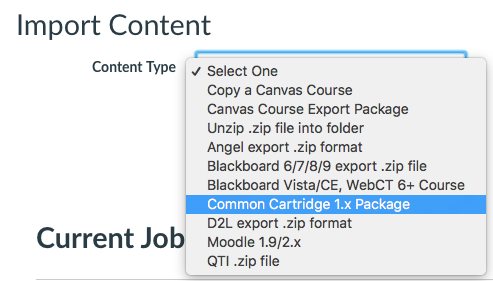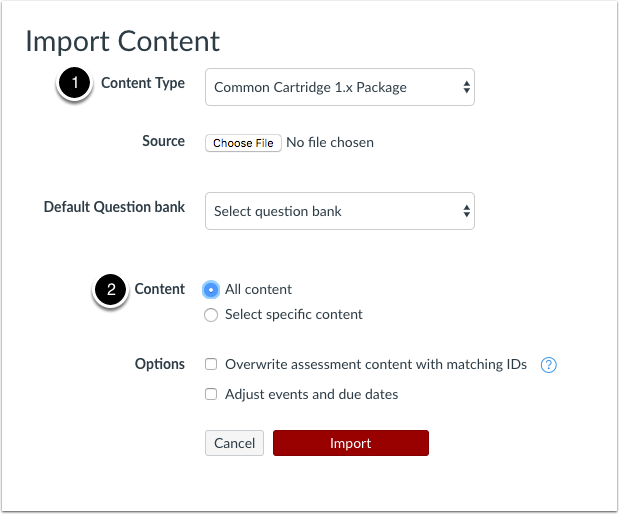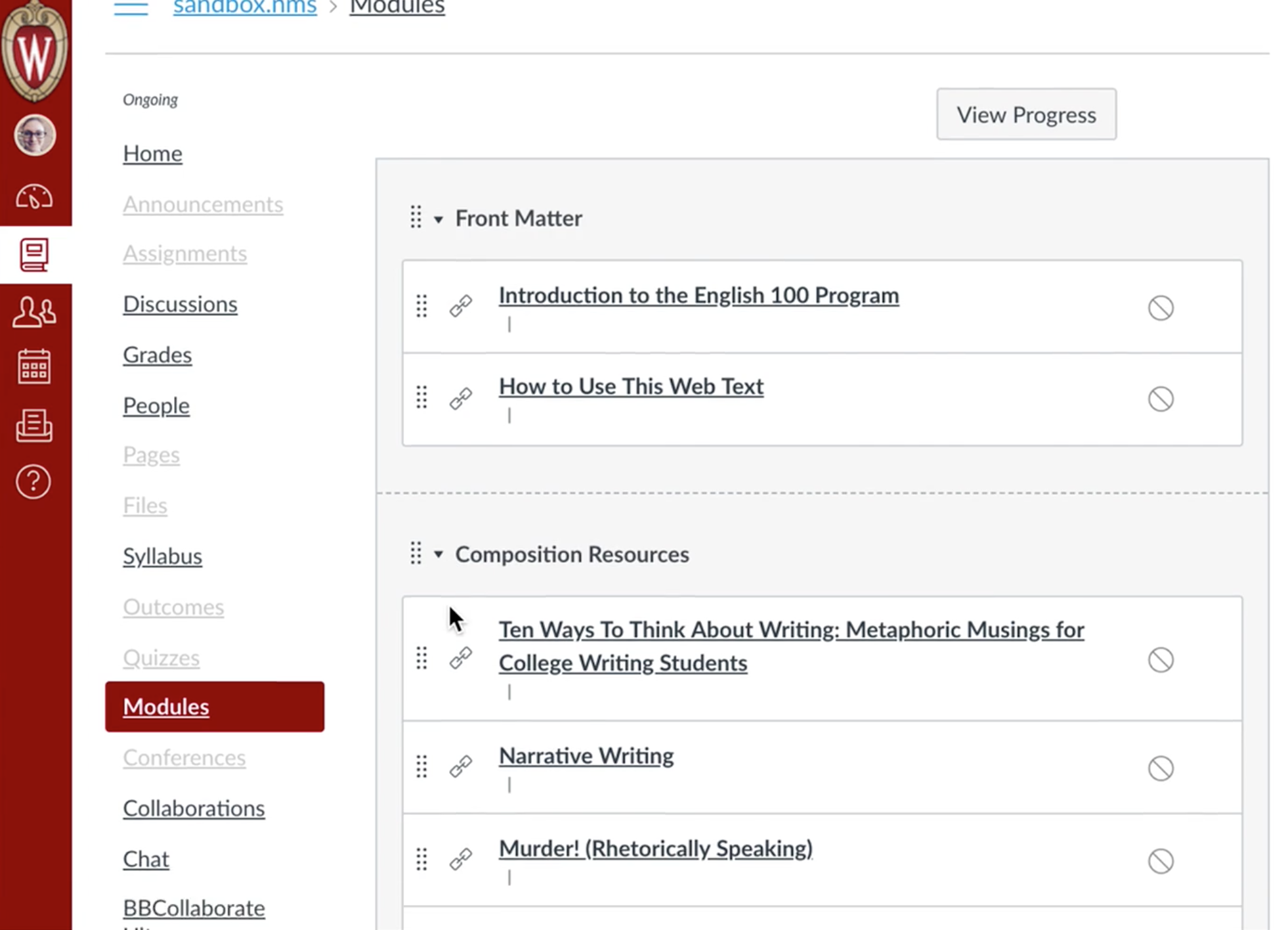Embedding Pressbooks Readings in Canvas
Step 1: Download the Pressbooks reader “Thin Common Cartridge” file
-
- Log into your UW-Madison Box Account.
- Once you have done so, navigate to this shared department BOX folder.

-
- There, you’ll find a zip file titled “E100 Pilot Reader File For Canvas Upload.” Download this file, but don’t unzip the file. You’ll upload this file to Canvas as-is.

When you click on the file, options to open the file, download, or share the file will appear either on the top right-hand side of the screen or at the bottom of the screen. Click “download!”
- There, you’ll find a zip file titled “E100 Pilot Reader File For Canvas Upload.” Download this file, but don’t unzip the file. You’ll upload this file to Canvas as-is.
Step 2: Import the Pressbooks zip file into Canvas
1. Navigate to your Canvas course page and click on the “Settings” menu item on the left-hand side of your screen. Then select “Import Course Content.”You’ll be directed to a screen titled “Import Content.” The “Content Type” drop-down allows you to select your preferred file format. In this case, you will select “Common Cartridge 1.x package.”

2. Under the “Content” selection pane–(labeled “2” in the Import Content screen above)–you can choose either to include all or part of your Pressbooks content.
Click “All content.” You’ll be able to delete the readings you haven’t assigned in Canvas once the text is uploaded.
3. Once you have made your selections and selected “Choose File” to upload the Course Reader .zip file you downloaded into Canvas, click “Import.”
4. It may take Canvas a few minutes to import the text. Once it is successful, if you navigate to your Canvas “Modules” page, you will see each Pressbooks chapter listed as an unpublished module in Canvas.
In the example above, the user has chosen to upload all of their Pressbooks content into Canvas. Each Pressbooks section appears as a larger module. Each reading appears as a module post.
Once you click on the “publish” option for each module object, the module posts (“Ten Ways to Think About Writing,” “Strategies for Revision,” etc.) will appear as embedded pages you click them.
Note: One of the quirks of this Canvas-Pressbooks integration is that if you switch from instructor view to “Student View” in Canvas, you’ll get an error message when you click on the embedded readings. This doesn’t mean that your students can’t see the reading! The error message shows up in student view because the Canvas-Pressbooks integration doesn’t recognize the fake email address assigned to each instructor when they enter student view.
The short version: if you can see the Pressbooks page when you look at your modules in instructor mode, your students should be able to see them too. However, if you’re concerned about whether your students can see the embedded readings in Canvas, simply ask them!
View Step 2 in Action
Note: the video below is silent.
It shows:
- The process of uploading the course reader Zip file to Canvas
- What a text looks like when embedded into the course in the form of unpublished modules
- An instructor choosing to publish only some of the texts in the course reader for their students
- The error message that appears when you try to view the reading in “student view.” (Never fear! This is normal. Students should see the actual reading.)
- What the readings look like to you and to your students when they are embedded in Canvas as a published module.
Step 3: Working With Readings in Canvas
The version of the reader embedded in your Canvas modules is connected to the course reader website, and this means that you can’t edit individual reader pages’ text in Canvas.
You can, however, change what appears in your course and the order in which it appears. It’s important to note that nothing you do to the readings in your own Canvas page will affect the contents of the E100 program’s reader as a whole. In other words:
- You can reorder modules or readings by dragging and dropping module entries in Canvas just like you would with another Canvas module page.
- If you don’t want to use a particular essay in your course, simply delete its module entry in your Canvas page. This won’t affect the official course reader in any way!



